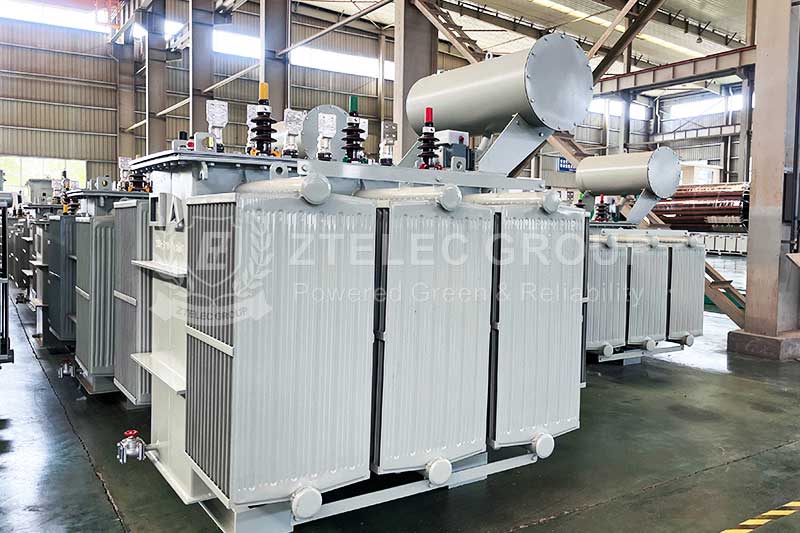Why distribution transformer temperature is too high
Time:2025-04-2 Auther:ZTelec-www.ztelectransformer.com
As a vital equipment in the power system, the distribution transformer undertakes the key tasks of voltage conversion, power transmission and distribution. However, in the actual operation process, the distribution transformer often has the problem of overheating, which not only affects its service life and performance, but also may cause safety accidents and pose a threat to the stable operation of the entire power system. So, what causes the temperature of the distribution transformer to be too high?

1.Excessive load
When the load of the transformer exceeds its rated capacity, the losses in the windings and core will increase, resulting in excessive temperature rise. Long-term overload operation will cause the transformer temperature to continue to rise, beyond the normal range.
2.Poor heat dissipation
During operation, the distribution transformer will generate heat, which needs to be dissipated through the heat dissipation device. If the heat dissipation device is blocked, such as too much dust and debris in the heat sink , it will affect the air circulation and reduce the heat dissipation efficiency. Taking the air-cooled radiator as an example, under normal circumstances, the air can pass smoothly through the heat sink and take away the heat. However, when the heat sink is blocked, the air circulation is blocked, and the heat cannot be dissipated in time, which will cause the transformer temperature to rise. In addition, the failure of the cooling fan and the damage of the radiator will also make the heat dissipation effect worse, causing the transformer temperature to continue to rise.
Insulation material aging: As the use time increases, the insulation material will gradually age and the insulation performance will decrease. This will lead to increased current leakage, generate more heat, and thus temperature rise becomes higher.
Core heating: If the core insulation is damaged or overvoltage is applied for a long time, eddy current loss and hysteresis loss will increase, causing the equipment to overheat. In addition, the material selection of silicon steel sheets will also affect the heating of the core.
Local short circuit: If there is a local short circuit in the transformer winding, the current will be concentrated in a local area of the winding, causing a local temperature increase and even causing the winding to burn out. Therefore, it is necessary to detect and handle winding faults in a timely manner to reduce losses.
External environmental factors: The ambient temperature will also affect the temperature of the transformer. If the transformer is in a high temperature environment, the heat dissipation effect will deteriorate, causing the temperature to rise. At this time, take measures such as adding heat dissipation equipment and lowering the ambient temperature to reduce the temperature.
Other faults: Turn-to-turn or inter-layer short circuits in the winding, poor contact of the tap changer, and insulation damage between the core silicon steel sheets can also cause the transformer temperature to rise.

How to diagnose overtemperature in distributiontransformers
Preliminary inspection: Record load current, ambient temperature, and observe whether the cooling system is running.
Infrared temperature measurement: Locate hot spots (such as bushings, tap changers).
Oil testing/gas analysis (oil-immersed transformer): Determine internal faults.
Electrical test: Measure winding resistance, insulation resistance, no-load loss, etc.




